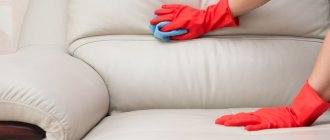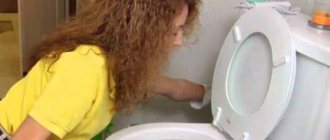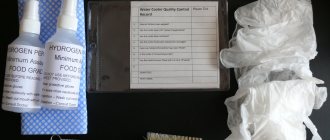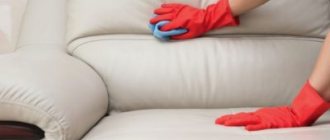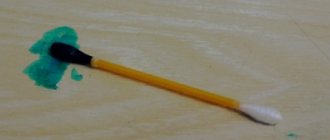Cats are affectionate and graceful animals that create coziness and a feeling of peace in the apartment. After a hard day at work, it’s nice to play with your pets or just listen to their purring. But, despite all these advantages, cats can cause a lot of trouble for humans. Their habit of sharpening their claws on the sofa can infuriate even the most loving owner. To keep upholstered furniture intact, you need to understand why the animal behaves this way and gradually wean the cat from tearing up the sofa.
Why do cats sharpen their claws?
There are many reasons explaining the natural behavior of representatives of the feline family:
- Physiology. The claws are constantly growing, and over time the old nail plate is replaced by a new, sharper and stronger one. During this, the animal experiences discomfort and inconvenience, as hangnails may form on the paws. To get rid of unpleasant sensations and to speed up the process of changing claws, cats sharpen them on what they consider to be fairly hard surfaces.
- Cats fight for territory. Veterinarians and zoologists say that the tips of a cat's paw pads contain sweat glands necessary for unique scent marks. Thus, the cat makes it clear that he is the boss here.
- This is a kind of fitness to maintain physical shape. While sharpening its claws, the cat uses many muscles, thereby subjecting them to considerable stress.
- Fighting stress. Perhaps damaged furniture and tattered wallpaper are the result of a nervous shock the cat has experienced, or he is simply trying to attract your attention.
Ways to fight
Let's look at proven methods that will prevent your pet from ruining your furniture.
scratching post
The most obvious and effective solution is to buy a special scraper. It can even be used to teach an adult pet to scratch furniture. While it's best to get your kitten used to this as a baby, you just need to show him the correct spot.
If the animal still does not understand what the scratching post is for, you can apply a few drops of catnip or valerian to its surface. After several such trainings, your pet will forget about the furniture.
Water in a spray bottle
There is another fairly safe way to distract a cat from its favorite sofa - plain water. Pour water into the sprayer and, as soon as the animal decides to sharpen its claws in the wrong place, pour water on them.
Over time, the cat will understand that the sofa causes discomfort and will stop approaching it. The only downside to this method is that it only works when you are at home.
Duct tape
This method is good because it is absolutely harmless to your pet and at the same time very effective. All you need to do is buy double-sided tape or adhesive tape and stick it on the sofa.
Pets really don't like having their fur stuck to anything, so after a few failed attempts to reach the furniture, your pet will likely lose interest.
Unpleasant odors
Since cats do not like the strong and unpleasant smells of garlic, onions or citrus fruits, they can “play into the hands” of the owner.
Of course, we won’t rub the furniture with garlic, but orange or lemon can help us.
To do this, add a few drops of orange, eucalyptus or other oil to a spray bottle and spray the furniture with it.
Strict command
Cats are very sensitive to their owner's voice, and if they feel dissatisfied with your intonation, they will listen most of the time.
The next time she reaches for the couch and yells at him. Thus, he understands that the owner does not like it and the cat will not scratch the furniture in his presence.
Cats' Favorite Surfaces
Probably, upholstered furniture most often suffers from cat claws. It is not for nothing that cats choose armchairs, poufs or sofas as victims; their choice is not accidental. If the animal lives in a natural environment, the main accessory for manicure procedures is tree bark; in an apartment, the cat has no choice but to use an alternative option - upholstered furniture.
In addition, purrs do not mind testing window curtains, carpets, cabinet furniture facades, etc. for strength. There are also surfaces that cats are not interested in:
- ceramic tile;
- stone;
- plaster;
- plastic;
- linoleum;
- parquet;
- laminate and others.
Unfortunately, the materials listed are not used to make furniture, so your furnishings are still at risk. To somehow protect the upholstery or hide existing damage, you can use protective covers or restore the furniture. Next, we will talk about methods that allow you to wean a cat from tearing up furniture and are aimed at re-educating it.
Spray bottle in the fight against cat claws
You can try to stop your cat from scratching the sofa using a regular spray bottle filled with clean water.
It is a well-known fact that representatives of the cat breed do not like water and avoid contact with it in every possible way. This can be used in the fight to preserve the normal appearance of your apartment. As soon as the purr decides to sharpen its claws on your favorite sofa, direct a stream of water at it and thoroughly wet the scoundrel.
Advantages of the method:
- works after systematic punishment;
- does not require the purchase of special devices;
- does not come with any costs.
Minuses:
- the technique is effective only when you record the cat’s intention and immediately punish it;
- As soon as the smart cat is left unwatched, he will continue his dirty deed without delay.
Cats don't like strong scents - we use this against them
If spraying with cold water does not bring results, you need to look for a new effective method that will help bring some sense to the animal. Many breeders use scents in this matter, for example, a bright citrus aroma.
In some cases, it is enough to put a slice of lemon next to your favorite place for manicure and the cat will not repeat his old mistakes for a long time, leaving his favorite carpet alone. You can use citrus essential oils, but under no circumstances apply them to the damaged area, so that you don’t have to figure out how to remove the resulting stains. Specialized veterinary stores have special repellent sprays and fumigators:
Pros:
- efficiency 99.9%.
Minuses:
- aroma traps will have to be constantly updated, since natural odors quickly disappear.
How to choose a scratching post for a cat?
Scratching posts are usually made of cardboard, wood, and plywood. Cardboard or twine is used to sharpen claws. The most important thing is that the materials are environmentally friendly.
In stores today you can purchase the following types of scratching posts:
- Column. This is the most common type. It can be combined with a pet house or shelf at the same time. But this is not the reason for the popularity of the element. This is because cats love to climb trees, and this unit is very similar to a small tree. The only nuance that you will have to consider when purchasing is the height of the product. The cheapest are short bars. But cats grow quickly, and therefore it will be uncomfortable for your pet to play. Also pay attention to the stability of the toy, as cats love to throw themselves at such things.
Column
- On the wall. A wall claw is the next most popular type. This toy takes up little space, and the cat can climb on it. Hang the wall-mounted claw clipper on the wall or in the corner of the room. The device thus covers the corner from 2 sides. Your pet will play on both the right and left sides at the same time.
Wall-mounted
- Little house. As a rule, the walls and roof of such houses are upholstered with a special material that allows the animal to sharpen its claws. The solution is considered compact, but not ideal. If your cat loves to sharpen its claws on a horizontal or vertical plane, then this option will not seem very comfortable to him.
House
- Bed. This is also a great choice. It’s almost 2 in 1: the cat can rest on a bed and immediately sharpen its claws. The beds still fit well into the interior, since you can find a huge number of modifications in stores. Unfortunately, such a device is not available in every online store.
Bed
- Shelf. This device is very convenient for those pets who constantly climb to heights. The device will also work if both cats and dogs live in the apartment. The shelf will easily fit into the interior of the room and will help you come up with an unusual design solution.
For lovers of heights
- Scratching post and balls. Often such devices are combined with balls, soft small toys that can dangle, luring the animal towards you. This entertainment device is suitable for those cats who are inactive.
With balls
- Large complex. The best option for a scratching post. Such a set may contain a scratching post itself, a house, a tunnel, a bed, and so on. Also on sale you can find steps, toys that are built into the complex and tease the animals. A set of scratching posts can comfortably occupy any corner of the apartment or the entire room up to the ceiling. Here everything will depend on your home, its square footage, the number of cats in the apartment and financial capabilities.
Complex
Scotch tape will help preserve furniture
If for some reason the previous two methods did not work or did not suit you, try retraining the cat using regular double-sided tape.
The fact is that cats really don’t like it when their paws stick to something, so they won’t sharpen their claws on a sticky surface. To test this method in practice, stick a sufficient amount of tape to the damaged side of the furniture, curtain, or window sill.
Pros:
- the cat will not want to deal with the unpleasant sticky surface and will lose interest in it;
Minuses:
- Because of the sticky tape, the interior will, of course, not benefit; you will have to endure some inconveniences until the bad habit is eradicated.
What not to do?
Many people do not know that cats are not subject to any prohibitions or persuasion. Also, animals are not afraid of threats. Cats always do what they want, and therefore they do not always pay attention to their owners. Therefore, when you wean your pet from “scratching”, remember the following important nuances:
- Do not use physical punishment when training your cat. The animal will get angry at you and someday decide to take revenge.
- Try to shame the cat only after catching it in the act.
- Do not throw away the old nail polisher, as the animal has already become accustomed to its smell.
- Don't yell at your pet. Increase your intonation, but not too much.
Trimming or declawing
You can get your favorite furry manicure done at a pet beauty salon, use the services of a groomer or veterinarian, or try to master a simple procedure yourself at home. For this you will need a nail clipper.
One of the simplest answers to the question of how to stop a cat from scratching furniture with its claws is help with manicure. If you decide to carry out the manipulation yourself, be patient, ask someone to hold the animal, act with extreme caution so as not to injure the delicate skin of the pet.
Those who have repeatedly unsuccessfully tried to wean a cat from the harmful habit of ruining an apartment often use a drastic remedy to prevent the cat from tearing up the furniture - declawing. From a common sense point of view, this is a barbaric procedure, as a result of which your animal will lose an important part of its body, will not be able to walk outside, will not be able to protect itself from the enemy and will be forced to go through a long rehabilitation period.
Install a scratching post at home
To preserve the original appearance of upholstered furniture, manufacturers of veterinary products have come up with special scratching posts that purrs can use for their intended purpose, without fear of being punished. Veterinarians and breeders recommend accustoming your kitten to a useful device from childhood, so you can be sure that the sofa and other upholstered furniture will definitely not interest the fluffy one.
The choice of scratching posts in the pet store is huge:
- in the form of a house or play complex;
- corners for protecting corners of furniture, connecting walls;
- in the form of a straight board, wave;
- in the form of a column.
These can be floor or wall structures, simplified products in the form of fabric-upholstered boards, or multifunctional houses with a sleeping area and several play compartments. Scratching posts are made from different materials; sesal, jute, natural wood, and carpet are used in production. Whatever option you choose, the main thing is to accustom the cat to it as early as possible. This can be achieved by using a variety of treats to attract attention, including catnip treats.
You can also apply special products to the surface of the scratching post to correct the behavior of the fluffy.
A scratching post is the best device
A great way to save your favorite items is a scratching post. With its help, you can save wallpaper and furniture without harming your pet. Moreover, now you can find a scratching post for every taste and color: from the simplest to the most intricate, built into a house on several floors. The materials are also different and your pet will find one that will impress him more than expensive coatings.
The shapes also differ: vertical, horizontal, inclined. To begin with, it is worth proceeding from financial capabilities and taking into account the material of manufacture. Observe what your animal likes to scratch the most.
It would be good to install the scratching post in your pet’s favorite place and secure it well. Everything should be as comfortable and pleasant as possible so that the animal likes it.
What you should pay attention to:
- Cats usually sharpen their claws after waking up, so it is best to place the scratching post near their sleeping area.
- You should spray it with a spray that arouses interest among animals, or tie a toy there.
- After the scratching post is installed, keep an eye on the cat. As she sharpens her claws in the right place, give her a treat.
- If you suddenly find an animal doing leprosy, do not scold it, but take it to the scratching post.
- Claws must be trimmed very carefully. You should buy a special nail clipper in the store and cut only the light part of the nail. Do not touch a blood vessel under any circumstances, otherwise your pet will never let you near its claws again.
- If the cat continues to damage wallpaper and furniture after the scratching post, then immediately after the crime, scare it.
- After purchasing a scratching post, try to save your favorite places with tape, foil, and sandpaper. Create the most inconvenient conditions for sharpening claws in places that are inconvenient for you.
How to stop your cat from scratching furniture using alternative methods
If you have tried all of the listed methods in your arsenal and none of them have proven effective, you need to try alternative methods of combating a bad cat habit:
- Try putting special anti-scratch guards on the cunning pest's claws. Each claw is fitted with a silicone attachment, which is attached to the surface of the claw with glue, which prevents accidental removal of the accessory.
- Furniture covers. To protect your favorite bed, new sofa or comfortable chair in which you like to drink hot tea and watch the evening news from the merciless claws, you can buy protective furniture covers, the material of which will not be of interest to the four-legged pest.
- Considering that cats choose only certain materials for sharpening their claws, you can replace the damaged material with something that will not arouse the purr's interest. So, in place of the destroyed wallpaper, you can put tiles or cover it with plastic panels.
- Try not to leave your cat alone with an object that she mistook for a scratching post; raising pets has not yet been canceled.
Unlike surgical declawing, the pet does not experience pain or significant discomfort, quickly gets used to the changes and eventually stops paying attention to the attachments. The only thing a cat with such a manicure cannot do is jump to a considerable height and damage your furniture, which means that the goal can be considered achieved. After the claws grow back, you will have to repeat the procedure of gluing new pads.
Instinct or harmfulness?
In fact, there are many reasons why a cat begins to damage furniture:
- First of all, this is primarily a way to get rid of old claws, the so-called cat manicure. In nature, all representatives of the cat family, such as kumaras, lynxes and lions, sharpen their claws on trees and stumps, since claws are the main defense against enemies. Even though cats have lived with people for a long time, they still have their hunting instincts. So, cats practice sticking their claws in and out;
- secondly, this is how your furry pets mark their territory, leaving behind a secret scent where they scratch. This is invisible to the human sense of smell, but to animals it is a sign that the territory is occupied;
- thirdly, by scratching upholstered furniture, the animal relieves stress, attracts the owner’s attention, or takes revenge for something.
General tips or how to stop a cat from tearing up furniture
Do not forget that representatives of the cat family are very smart and resourceful. To retrain an animal, you will have to “have a heart-to-heart talk with it,” be affectionate and attentive, carefully pointing out errors in behavior.
Aggression and physical punishment do not lead to a positive result; it causes stress in the pet and only aggravates the situation. As for education, you need to adhere to the following principles:
- make sure that the cat does not experience stress, surround it with love and sincere care;
- set the boundaries of what is permitted and do not allow them to be crossed;
- Do not hit a defenseless animal, this is a form of cruelty and is absolutely unacceptable.
We talked about how to wean a cat from tearing up a sofa and other interior items, and dwelled in detail on popular methods of combating a bad habit. You just have to choose which of these options you will use.
Check out the toys, teasers, and treats that will keep your furry pets occupied:
Will sterilization help?
As we wrote in the first paragraph, cats mark their territory by leaving their scent and marks. As many people know, if you sterilize an animal, it loses interest in the opposite sex. But sterilization will not help overcome the instinct to mark oneself with claws!
Yes, it is necessary to sterilize pets; this will protect them from many diseases and prolong their lives. You, in turn, will not need to listen to cat concerts or think about what to do with the offspring. How to stop a cat from scratching furniture and wallpaper? There are other productive methods.




